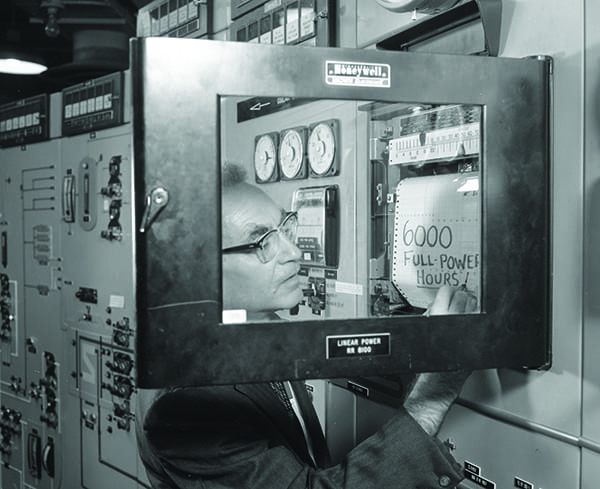
Posted on 06/05/2017 4:43:10 AM PDT by RC one
Power-short Indonesia has been mulling building a nuclear power plant for nearly 15 years, and it is exploring a number of novel options, including high-temperature gas-cooled reactors (HTGRs) and a thorium molten salt reactor.
The 1958-established National Atomic Energy Agency (Badan Tenaga Nuklir Nasional, BATAN) wants to build an experimental nuclear power reactor at Serpong, the site of its largest multipurpose research reactor, and it continues to assess its options. In early 2015, BATAN signed a contract to build and test a pebble-bed HTGR at Serpong with a consortium of Russian and Indonesian companies led by NUKEM Technologies. And, in August 2016, BATAN pushed on with its nuclear ambitions, signing a cooperation agreement with China Nuclear Engineering Corp., looking to develop small HTGRs in Kalimantan and Sulawesi by 2027. BATAN also has agreements with Russia’s Rosatom to develop a floating nuclear power plant that could electrify its smaller inhabited islands.
This March, the country stepped up its nuclear curiosity. Three state-owned Indonesian power companies—power generator PT PLN, nuclear fuel processing firm PT Industry Nuklir Indonesia (INUKI), and oil and gas giant PT Pertamina—completed a 10-month-long preliminary feasibility study for a 250-MW molten salt reactor that would use a combination of 80% thorium and 20% uranium (the uranium would be enriched to 19.75% U-235, and the fuel would be delivered to the plant as fluoride salts). The reactor design was unveiled in January 2015 by ThorCon International, a company owned by Florida-based consulting firm Martingale Inc. The prefeasibility study stems from a memorandum of understanding the company signed with the Indonesian state firms in December 2015.
INUKI said its interest in the thorium reactor is rooted in Indonesia’s abundant resources of monazite, which is recovered from the country’s substantial tin mining industry. PLN, meanwhile, has conditionally included the use of thorium molten salt reactors in its National Electricity Business Plan for the period spanning 2017 to 2026. BATAN, which hasn’t yet issued a decision on whether the reactor design fits the country’s needs, said that if all fares well during its assessment period, it will recommend the design as the basis for Indonesia’s first commercial nuclear power plant.
ThorCon is a “straightforward” scale-up of an experimental molten salt reactor at the Oak Ridge National Laboratory (ORNL) in Tennessee, which operated between 1965 and 1969 (Figure 1). ORNL conceived the concept of “liquid fuel” as an alternative to the water-cooled, zirconium-clad uranium oxide solid fuel rods used in light water reactors. In a molten salt reactor, thorium and uranium fluorides are dissolved in molten salt, which, in ThorCon’s case is a mix of fluorides of beryllium and sodium heated between 560C and 700C. The fuel flows through the reactor vessel—where it fissions and grows hotter—then through a pump and heat exchanger to cool it.
Remarkably, ORNL’s Molten Salt Reactor Experiment (MSRE) was inspired by a campaign to build a nuclear-powered airplane in the 1950s, because engineers saw promising results from the design that used molten fluoride salt as fuel carrier and coolant for an onboard carrier. But that project was scrapped in the 1960s, and molten salt reactor efforts have since transitioned to power generation.
Benefits touted by the MSRE technology’s proponents were that it could make fuel as it operated—mitigating worries about scarce uranium supplies—and that the circulating fuel eliminated change outs of solid fuel and control rod mechanisms. Another highlighted aspect was intrinsic safety: “Molten salts expand as they heat up,” explained ORNL. “The expansion causes some of the fuel to leave the core, shutting down the reactor, so operator response is not required to turn the reactor off.”
Like the experimental reactor, ThorCon is designed for installation 15 to 30 meters underground (Figure 2). “ThorCon has three gas tight barriers between the fuelsalt and the atmosphere,” said its developer. “The reactor operates at slight over-pressure so that in the event of a primary loop rupture, there is no dispersal energy and also no phase change. The spilled fuel merely flows to a drain tank where it is passively cooled. The most troublesome fission products, including [strontium-90] and [cesium-137], are chemically bound to the salt. They will end up in the drain tank as well.”

1. Rooted in history. The Molten Salt Reactor Experiment (MSRE) ran a brief four years in the 1960s at the U.S. Department of Energy’s Oak Ridge National Laboratory. The MSRE lost funding and the entire program was shut down in 1973. In this photo, ORNL Director Alvin Weinberg marks 6,000 full-power hours of MSRE operation. Source: Oak Ridge National Laboratory
Thanks for the information... Interesting.
Correct, since innovation CANNOT be stopped.
"A socialist monopoly however is insurmountable because it carries with it the full weight of the authorities and the ideology that is inculcated into every man, woman and child in the country."
BS--EVERY "full socialist" economy ever tried in modern times has collapsed, Venezuela being the latest example. EVERY one. Some blended socialist/capitalist democracies have lasted for a while, I think most of them ultimately fail as well.
Disclaimer: Opinions posted on Free Republic are those of the individual posters and do not necessarily represent the opinion of Free Republic or its management. All materials posted herein are protected by copyright law and the exemption for fair use of copyrighted works.